Tomorrow’s food comes from fields and bioreactors

This article was originally published in Unit, the magazine of Tampere Universities.
In the contemporary western world, consumers face numerous food-related choices. We know what our tastebuds like, but we also know the effects of our choices on blood pressure and the planet’s carbon dioxide emissions.
Now and in the future, our food choices are affected by increasing awareness about the environment and our desire to be healthier, but we also want to enjoy our food. Food technologies are also developing fast.
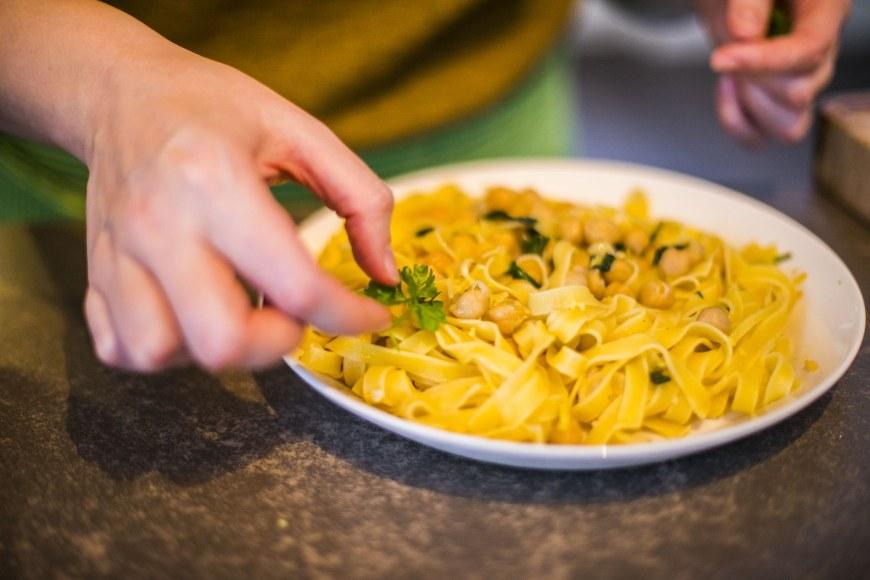
Vegetarian food is no longer just for hippies
In the recent years, many influential people in Finland have said that they have reduced the consumption of animal source food. Postdoctoral Research Fellow Markus Vinnari from Tampere University, an expert on sustainable development, is not surprised by these trends.
Vinnari predicted the rise of veganism in his doctoral dissertation in 2010; the first articles for the study were already published in 2005. Vinnari has predicted that by the year 2050 we will mainly eat plant-based food.
This change is especially driven by climate change. According to a report published by the International Panel on Climate Change (IPCC), industrial livestock farming based on animal production is digging its own grave. It depletes the nature and accelerates global warming; these phenomena also reinforce one another. According to Vinnari, researchers have known this for a long time, but the public is only just awakening to such issues as nutrient circulation in the soil and loss of biodiversity.
The scholarly world has adopted the view that the health and environmental effects of food are closely associated and that it pays off to study the two together. For example, fertilisers and chemicals may deplete the soil of nutrients and have an effect on our health.
These days, concern for the future also seems to be awakening those who find animal rights a distant and uninteresting topic. To Vinnari, this is a particularly interesting trend.
Perhaps the most significant apologia for vegetarian food in Finland appeared on Twitter in 2017. Vinnari had shared an article from The Economist saying that the kitchen of the President of Argentina served only vegetarian food on Mondays. In his tweet, Vinnari asked when the Finnish President Sauli Niinistö was going to do the same. Niinistö responded by saying that he only ate meat once a week.
“Such comments send an important signal. When the President says that the daily consumption of meat is not a necessary thing, the effect is stronger than that achieved by enforced limitations,” Vinnari says.
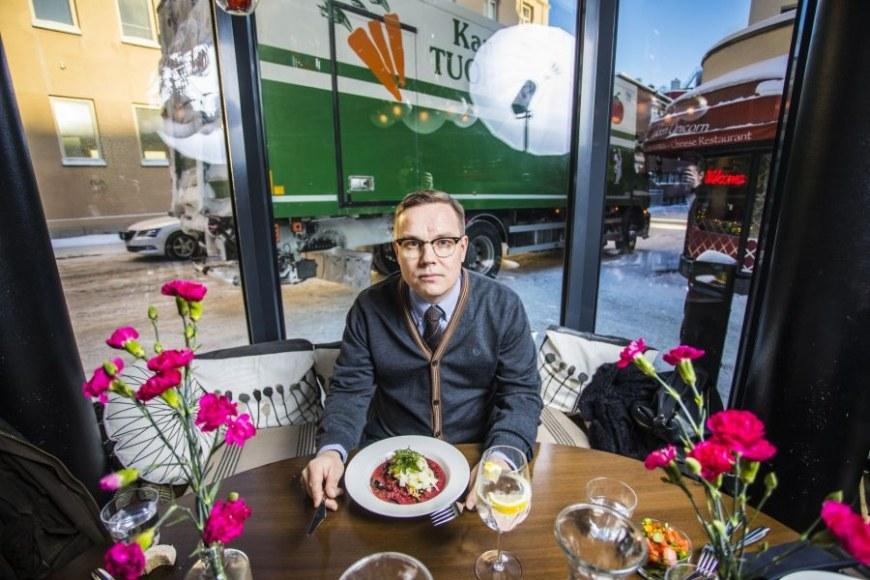
Food consumption changes slowly
In common parlance, we often talk about food trends. Vinnari would rather talk about more permanent changes in food consumption.
Food consumption may be thought of as a line in the horizon describing our actions, which is changed the most by aspects that have an effect from the above on the things below. The upper level is slowly changing. It is shaped by the society’s values, paradigms and megatrends.
Concrete examples of the influence from the above are political decisions concerning agricultural subsidies and trade. Attitudes are another factor working from the above. Industrial farming based on large production volumes is a normal ideal in our society, which is maintained by policies on agricultural subsidies and research funding.
Research findings trying to guide people to eat healthily are also found on the upper level, as are history, culture and religion. The debate on climate change has become an increasingly significant aspect of the upper level that impacts our food consumption.
The space below the horizontal line is called the niche level. Such food innovations as pulled oats and small-scale entrepreneurship, which has even encouraged milk producers to enter the oat business, have come from this level.
According to Vinnari, the structure of food consumption found between these levels is gradually changing.
“Even large transitions are possible when the old paradigms on the upper level change and are replaced by others. Innovations then again bring us new products and operating methods from the niche level,” Vinnari points out.
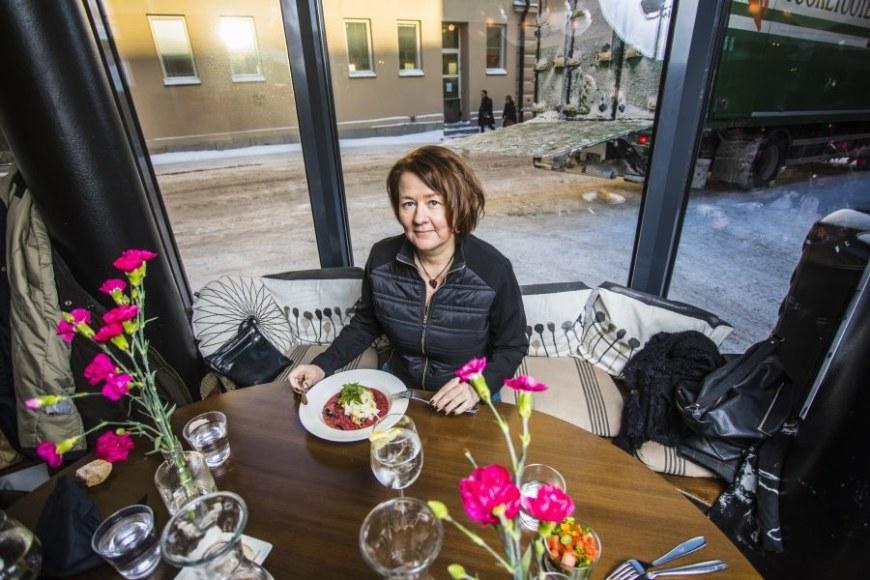
Omnivores play a crucial role
If you put oat milk in your coffee but eat a regular cream bun, do you call yourself an omnivore, flexible vegan or a part-time vegetarian i.e. flexitarian?
Professor Piia Jallinoja, who has analysed the vegan boom of the 2010s, thinks that such identity problems will not exist in the future. She is the principal investigator of the POPRASUS project that focuses on the conditions of sustainable eating and food policies. New definitions that describe the new plant-based diets, followed by many consumers, are likely to appear
http://sustainablediets.fi
“The new normal could be a cafeteria serving oat, soy and cow’s milk. Choosing between them is not much of a statement, but rather like the choice between a donut and a bun,” Jallinoja says.
She does not believe that the number of vegans would exponentially increase in the next couple of years. In a survey conducted by the market research company Taloustutkimus in 2016, only 1.1% of Finns said that they were vegans; 2.5% were vegetarians. 8.3% reported that they did not eat red meat.
“It is likely that at least to begin with, the number of consumers who eat both animal-based and vegan food grows,” Jallinoja says. First, people try oat milk, and when they find that it is quite good, they start to replace other animal-based foods with vegan options.
In order to change our lifestyles permanently, we need constant nudges about new research findings, celebrities talking about vegan food, and food innovations.
The low-carb fad of the early 2000s faded and divided into several branches, such as gluten-free and paleo diets. However, Jallinoja does not simply place these fad diets on the same continuum as the current rise of vegan eating.
“There are broad political and environmental issues behind the increased interest in vegan eating and lifestyle, and hence, it is not only about individual problems, such as health concerns. Instead, such ideas are underpinned by the climate change and animal suffering. At the moment at least, these global challenges do not seem to be disappearing anywhere soon.
Motivated by taste
According to Vinnari, the crucial factor in switching to a vegetarian diet is taste. The so called Turing test is talked about in connection with artificial intelligence, which a machine passes by answering questions in a manner undistinguishable from the answers of real people.
“Food passes its Turing test when you cannot tell by the taste alone whether you are eating animal meat, a vegetable-based alternative or meat grown in cell culture. Poultry production is already close to this point,” Vinnari explains.
Vinnari does not support mandatory vegetarian days, which may evoke more irritation than enthusiasm. If a bean stew looked as delicious as a beef stew and were easily available, more people would choose the vegetarian option because they want to.
Before switching to vegetarian days, one should also ensure that the kitchen knows how to make the food delicious and has an understanding about alternative sources of protein.
“Vegan options should not be based on the idea that the meat is taken out and replaced by something or nothing. The vegan ingredients should be the starting point of the dish, but I understand why that might be difficult for someone trained in traditional cookery,” Vinnari notes.
Vinnari finds convenience and processed food also all right if they are delicious. And how does he answer the critique that pulled oats are processed food while meat is pure food?
“The speed whereby chickens are grown, the huge amounts of milk cows are currently made to produce, and animals’ living conditions are far from natural. Farmed animals as such are processed food,” Vinnari points out.
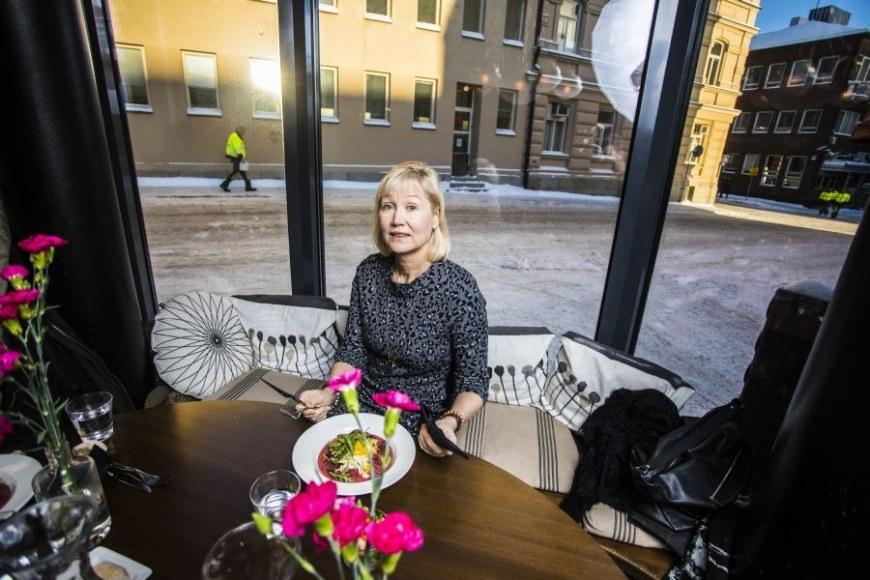
Crickets instead of minced meat
Crickets are currently being investigated as a more ecological alternative for industrially farmed meat. In September 2017, the Finnish Food Authority granted permission for selling insects for nutritional purposes in Finland. For example, bread and muesli containing cricket powder as well as Sirkkis, a meat substitute that also contains soy and pea flour, have appeared in the shops.
Entomologist Lena Huldén writes in her book Minikarjaa – Hyönteiset ruokana (2015, Like) (Mini cattle - insects as food, in Finnish) that even though raising mealworms and beef cattle consumes as much energy, savings in greenhouse gas emissions and soil use are significant in worm production.
The relationship between the fodder used and the nutrition produced is more advantageous in raising worms. Insects use most of their food on growth whereas mammals also need food for maintaining body temperature. Insects grow fast and 80% of the total body weight of crickets may be eaten while only about 40% of cows is edible.
Many insects are a better source of protein, lipids, amino acids and vitamins than beef or pork.
Insect food requires research and adjustment
In the autumn of 2016, an insect food project started at Tampere University of Applied Sciences coordinated by Tiina Wickman-Viitala. Students from different fields write their final theses on insect food.
Wickman-Viitala thinks that vegans who avoid all animal source products are hardly interested in insects as food. However, in the future, insects may be a staple of the climate conscious meat-eaters’ diet. Yet, issues around the nutritional value, production and ethics related to eating insects still require a lot of research.
“For example, we need to figure out if we could place insect farms close to existing food-processing plants. We would thus be able to use the waste heat from the plants to raise insects,” Wickman-Viitala says.
Insects’ sense of pain is also not yet well understood. A usual method of killing insects is deep freezing. It might be a more humane way than the methods used to slaughter animals because hibernation is a natural state of insects.
Insect food has long traditions in Africa, and the ancient Greeks also feasted on crickets. In Finland, people are both fascinated and repelled by insect food, because we are used to associating insects with spoiled food.
If we want to make insects an alternative for minced meat, we must make them interesting to the average consumer. Wickman-Viitala believes that instead of whole crickets, people cooking in their homes would be interested in processed foods that contain insect powder. She believes in modest dietary changes, voluntary tasting and carefully considered marketing that does not shock prejudiced people.
“People in their sixties who grew up in the meat culture could be motivated to reduce their meat intake by arguing that changing one’s diet even a little would also ensure that the future generations have food,” Wickman-Viitala says.

Meat does not have to come from an animal
Teeth hit a perfectly grilled hamburger, which is pink on the inside and oozes meat juices. The solid meaty mouthfeel ensures the deliciousness.
In the future, we may have such an experience without livestock farming, say Lauri Reuter, Doctor of Biotechnology, who is a specialist on disruptive technologies at the VTT Technical Research Centre of Finland Ltd.
Disruptions are sudden changes that significantly shape eg society, technologies and ways of doing business. Spotify has changed the pricing strategy of music; Uber has done the same with taxis. Reuter sees vegetable-based products produced in cell culture as a disruption. They will transform the definition of meat and the means of producing food.
Such a disruption has already started in Finland. Many hamburger restaurants offer vegetable-based patties that are surprisingly meat-like. A couple of hamburger chains have replaced their hamburger meat with the American vegetable-based Beyond Meat product, which gets its red colour from beetroot.
In the United States, even more meat-like vegetable products are sold because the genetic technologies used in producing foodstuffs are not as strictly controlled as in Europe. In the vegetarian patty of the Impossible Foods company, the meat-like aroma of iron has been created by heme, a myoglobin protein. https://impossiblefoods.com
Because of myoglobin, the hamburger patty can go brown but still remain red on the inside when fried. The protein created by Impossible Foods mimics this reaction.
More ecological food from a bioreactor
According to Reuter, in addition to laboratory meat, other products traditionally obtained from plants and animals can be produced in bioreactors in the future. This reduces the need to raise cattle and use the soil.
A bioreactor is a device that maintains the various stages of biological processes. For example, berry fibres and nutrients can be produced in bioreactors and the production of a commonly used protein powder does not require chickens.
“If we want a smoothie containing just specific nutrients in specific plants, why would we grow the entire plant?” Reuter asks.
Reuter does not believe that we will ever start just consuming food capsules as in sci-fi films. The texture, cooking and aromas of food give us pleasure. Instead, coffee-like raw materials, which are hard on the environment, can be produced without the bean stage into an instant coffee-like product, which only needs added water.
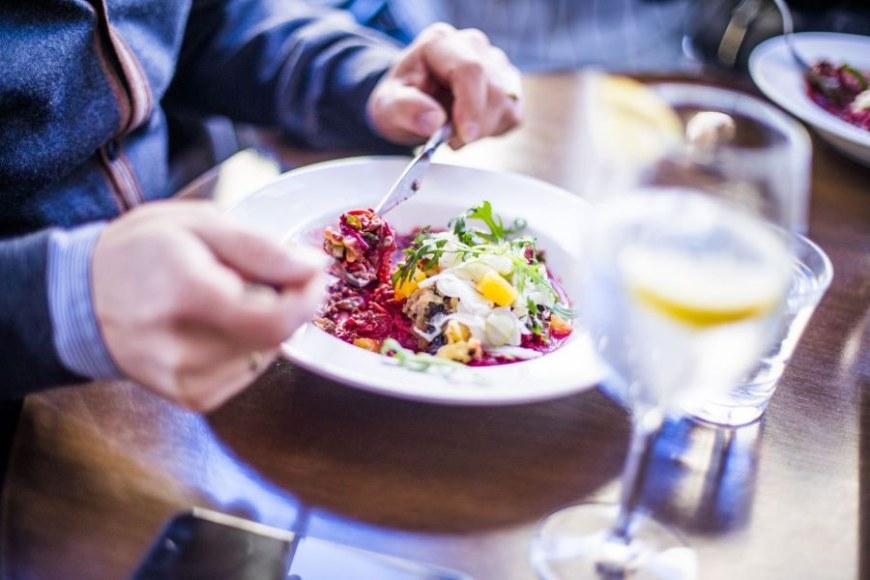
Food constructs identities
Our food choices also reflect identities and societies more widely. The rise of living standards and the breakdown of the uniform culture are also manifest in the variety of diets and food debates. Our food choices were previously largely determined by the price and availability of foodstuffs. Food was enjoyed, but it was not a similar environmental, health and identity issue as it is now.
Now a bacon eater might disparage a vegan by calling her a tree hugger. Vegetarians might debate whether a vegan can eat at such a multinational conglomerate as McDonald’s.
To classify is human. Especially in turbulent times, many feel a need to define and fortify the boundaries between various identity groups.
“Your identity may become blurred when veganism is no longer a marginalised lifestyle and new kinds of people, with different levels of engagement, join the tribe. The animal rights issue has traditionally been important in vegan circles. Now there are also other justifications for eating vegan food,” Jallinoja says.
The defence of meat eating may be a sign that many consumers are concerned that traditional components of food culture will disappear. New diets may also seem illogical and difficult. However, this is not the first time for negotiating the accepted ways of eating.
“For example, medical research has shown the existence of allergies, and now most of us understand that a person suffering from allergies should not be forced to eat allergenic food. Presently, ethical criteria are becoming a new accepted reason for having food preferences, such as veganism,” Jallinoja points out.
Diverse culinary aspects
Since the 19th century, food has for a good part been examined from the health perspective. However, environmental awareness and the hedonistic foodie culture are becoming increasingly stronger.
The culinary culture has also splintered, says Vesa Heikkinen, Lecturer in Service Design at Tampere University of Applied Sciences.
“A foodie may be defined as someone who loves their food and enjoys eating delicious food and imbibing good drinks,” Heikkinen says. However, what is good is individually experienced.
In the 2010s, Finnish foodies appreciate expertly cooked game and fish and often go hunting and fishing themselves. Some are interested in gathering wild herbs, some are visiting fine dining restaurants and authentic ethnic cuisines. More traditional foodies swear by home-cooked dishes, such as soups, casseroles and pies.
When purchasing power increased after the II World War, the middle classes started to travel and discover new cuisines.
“Our shops brought us new ingredients. From the 1990s, televised food entertainment made culinary pursuits a popular hobby. Before that, home cooking and nutritional aspects were highlighted by such programmes as Patakakkonen and the advertisements featuring Väiski from the K-stores,” Heikkinen says.
In the 1950s, culinary pursuits were a linguistic game. If a dish had a French name, it was considered a delicacy. Spectacular ways of serving dishes, such as flambéeing pepper steaks and crepes and carving flounders at the diner’s table, were fashionable.
Currently, restaurants are building the customer experience with the help of unexpectedness, the origin of the food and individuality. The mood is set eg by telling the diner who has manufactured the bowls from which the soup made of forest mushrooms from a certain region is served.
“However, the customers do not want to hear loquacious stories, but little hints. The waiter might ask the diners to guess where the wine is coming from. The client tastes the wine, searches for the answer and experiences the element and pleasure of solving the riddle,” Heikkinen says.
Great changes by little steps
For foodies in the 2020s, the world is thus an endless lunch buffet from which they can choose the morsels that best fit their current mood. The abundance of options is the delight and difficulty of permissive eating.
“We are being sold a culture of relaxation and enjoyment, but at the same time we are obliged to also consider the climate, health and other people,” Jallinoja says.
According to Heikkinen, each group of culinary connoisseurs is tempted and pressurised by different desires, expectations and duties. Sometimes we give in to hedonism and sometimes we are very health-conscious. Sometimes a meal tastes better when eaten alone, sometimes it is better in the company of other people. Sometimes we choose locally grown produce, sometimes seasonal foreign food.
“Our culinary culture is characterised by both internationality and hyper-locality. Our choices are also influenced by lack of time and the trend of ecologically sensible consumption,” Heikkinen says.
However, in order for the planet to be able to feed all people, our food consumption should change in favour of eating more plant-based foods. We also still want to enjoy our food. Can meat be replaced by laboratory-grown meat and insects? Are not people averse to those? How do we solve these dilemmas?
“I would not be surprised if people started branding laboratory-grown meat in the same fashion as small breweries and not as a food replacing or imitating meat. They might tell the story of a special producer, the birth of the product and the entrepreneur behind it,” Jallinoja says.
More important than a vegan month is what you mainly eat in twenty years.
Wickman-Viitala does not believe that crickets would completely replace meat on our plates. Insect protein may become one of the options to help us reduce meat consumption.
According to Reuter, you can sometimes eat tenderloin steaks.
“It makes more environmental sense to replace minced meat with vegetable proteins in daily cooking,” Reuter says
Heikkinen predicts that the climate change will strenthen hyper-locality and the appreciation of locally grown food, because a berry grown on the coast tastes different than a berry grown inland. Premium processed foods made of game, vegetables, berries and mushrooms could become important export goods in the same way as Cretan olive oil.
Vinnari has comforting news for people who struggle between hedonism, ethics and environmental concerns. He characterises himself as a product of the meat culture who avoids animal-based foods whenever it is possible and makes sense.
His route towards a more vegetarian diet has gradually happened over two decades. If his own grandmother serves him buns, Vinnari does not ask whether they have been made with butter or margarine.
“This is not the 100-metre sprint but a marathon. More important than a vegan month is what you mainly eat in twenty years,” Vinnari says.
Author: Janica Brander







